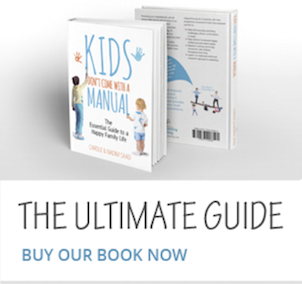Every parent hopes that their child will grow to become a confident and self-reliant adult. However, in order for that to happen we must first teach them how to be resilient, from as early an age as possible. Resilience is an essential tool that helps kids navigate their way through life’s inevitable challenges.
Adult life can be incredibly challenging at times; with bills to pay and work and family life to consider, it can sometimes feel like one long juggling act. That’s why as parents, we can have a tendency to dismiss our children’s problems as being trivial and even insignificant, and not give them a chance to express their emotions. However, what we must try to remember is that although we as adults may think that our child falling out with a friend at school may not compare with bigger problems we may face, for a child such an experience can be very traumatic.
However, we can also have the opposite tendency in some instances, in that rather than being dismissive of our child’s problems, we try instead to protect them from any potentially traumatic or distressing situations. We swoop in and try and ‘fix’ their problems for them, without really being aware that we are actually undermining the validity of their emotions in the process. Therefore, we must resist the temptation to try and protect our children from difficult emotions and experiences such as insecurity and anxiousness, as this will only serve to fuel their anxiety in the long-term.
There’s also the danger of allowing our children to become too ‘comfortable’ because we become over-protective in our parenting approach, by trying to accommodate our child’s every perceived ‘need’. In fact, research shows that children who can ‘Delay gratification’ grow to be more successful and happier adults, while instant gratification teaches children the wrong ideas (that they can get whatever they want if they create enough of a fuss). Children must learn, that they’re not alone in the world, and that there is time for everything. We shouldn’t worry that we will damage our children by frustrating them as we are teaching them patience and how to cope with frustration, both of which are important life skills.
We must endeavour to teach our children to view their mistakes as opportunities for learning, and model this behaviour through the way we approach and deal with the mistakes we make in our own lives. We must help them learn to manage challenging and difficult emotions, by dealing with problems rather than avoiding them. That’s why it’s essential to give your children age-appropriate ‘freedom’ and responsibilities, as this will help them to develop their own problem-solving skills, and nurtures resilience in the long term.
So, next time your child comes to you with a problem or shares a bad experience that they’ve had, here are six tips for how you can approach the situation in a way that will encourage autonomy and nurture resilience:
- Learn to truly listen to your child, and most importantly accept them for who they are. Refrain from judgement and criticism; teach them that their emotions are valid by giving them empathy.
- Connect with them using love, understanding and empathy, as this will help them to recognise their value and worth as a human being.
- As a parent, it is your job to offer support and guidance, but you must resist the urge to make your child’s decisions for them. Teach them how to take responsibility for their own actions and learn from their own mistakes.
- Find opportunities for them to practice waiting and train their ‘disappointment muscle’. This teaches children how to cope with frustration, which will help them learn how to regulate their emotions and self-soothe when faced with challenging or distressing situations.
- Avoid ‘why’ questions and replace with ‘how’ questions as this is a proactive rather than passive approach to the situation, which will encourage your child to take control of a challenging emotion or difficult experience rather than run away from it.
- If they are experiencing bullying or some form of rejection at school, have a brainstorming session about how they can ‘deal’ with the problem at hand, rather than avoid it. Offer them some examples of assertive language that other children have used when they’ve been on the receiving end of someone else’s hurtful words such as, “That’s your opinion and you can keep it.”
These are just a few examples of our Best of Parenting Tools. You can find more ideas and solutions to typical parenting challenges in our book ‘Kids Don’t Come With a Manual – The Essential Guide to a Happy Family Life‘.













































